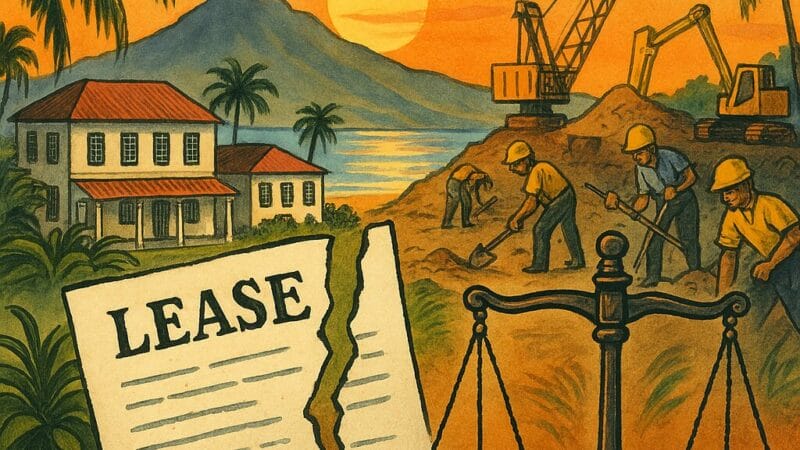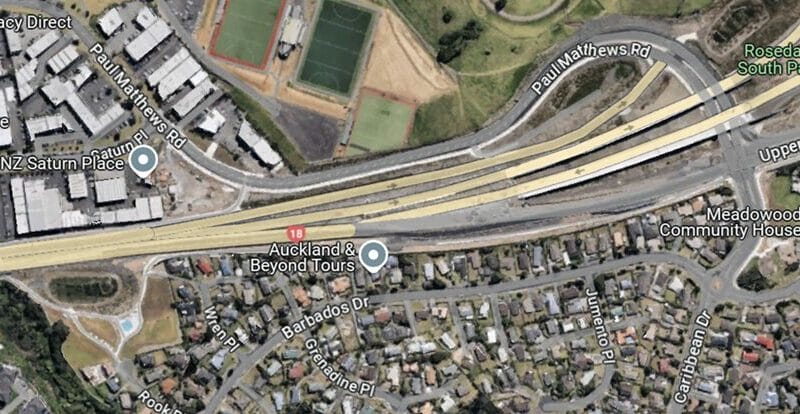In local government there is always a focus on optimising assets; particularly land, which is often the most financially and strategically significant asset held. However, sometimes the significance of the asset is not fully reflected in the processes and documents used when dealing with it; although a challenge not unique to local government. A prime example is the property industry’s over-reliance on generic forms of template documents for leasing arrangements such as that produced by The Law Association of New Zealand (formally the Auckland District Law Society).
The Law Association of New Zealand’s standard form of the deed of lease is probably the most used lease precedent across New Zealand. We have seen the form used in every possible configuration, from single office tenancies to large-scale commercial tenancies, which is arguably testament to its drafting, long-standing position in the market, and universal application. However, it is our experience that there is also a significant lack of understanding of what these forms say and consideration as to their application on a case-by-case basis. This, from both landlords and tenants.
The Law Association of New Zealand has released its latest version of the deed of lease (the Seventh Edition), which is the first major overhaul since 2012. The updates to the standard commercial deed of lease are intended to reflect the current commercial property landscape and address recent challenges such as Covid-19, high inflation, provide a more comprehensive framework for both landlords and tenants, and ensure clarity and fairness in lease agreements. We look at the key changes and comment below.
Key Changes
- First Schedule: The commercial options available to be completed or selected in the First Schedule have been expanded. This is intended to give the parties more options to reflect their particular deal, rather than amending the standard terms, or inserting further terms in the later schedules, to the lease.
- Renewal Notice Period: One of the additions to the First Schedule is an option to insert the agreed renewal notice period. The period by which the tenant is to have notified the landlord of its election to renew the lease. The earlier editions of the lease prescribed a period of three months and this remains the default if nothing is inserted.
- Fixed Rent Adjustment: A new fixed rent adjustment has also been included so that the rent can now be increased by an agreed percentage or amount. This is in addition to the standard market reviews and CPI adjustments.
- Rent Review Dates: The review dates are now referred to as review and adjustment dates to more appropriately reflect the adjustments for CPI and the fixed rate, rather than a market review of the rent.
- Ratchets: A significant structure change for the lease form is that there are now options for the ratchet on rent reviews. These are:
- Soft ratchet – the reviewed rent could not be less than the rent at the commencement date of the then current term of the lease. This is the default if no selection is made as was the case in the Sixth Edition. It is also the most prevalent in the market at the moment.
- Hard ratchet – reviewed rent will not be less than the rent payable immediately prior to the relevant rent review date. Considered a stricter and ‘older’ mechanism.
- Commencement ratchet – reviewed rent will not be less than the rent payable at the commencement date of the initial term of the lease.
- Other – bespoke options such as cap and/or collar ie: cap on any increase and/or collar on any decrease.
It is interesting to note the drafting here. The ratchets are expressed to apply to market reviews and CPI adjustments. Obviously, no ratchet is required for a fixed rate increase, which makes sense. However, the formula for the calculation of the CPI adjustment has the standard wording “where (C÷D) must not be less than 1”, which itself creates a hard ratchet. This has potential to raise the question on a CPI adjustment “what is the ratchet”? Although it is rare that CPI is in the negative (deflation) – although possible.
Either way, at least having the ratchet mechanism stated clearly in the First Schedule provides greater transparency.
- Interim Rent: The parties may now specify the interim rent mechanism on market reviews for the period it is being agreed or determined. The default, if no option is selected on entering the lease, now being the current rent. We find this an interesting adjustment to the form, particularly as the default position completely ignores the rental assessed by any registered valuers. At least under the earlier Sixth Edition the current rent was the default, but this changed if one, or both, parties had obtained registered valuations.
- Outgoings: The outgoings are largely as developed over the tenure of the ADLS format. We note that the Seventh Edition retains the exhaustive list approach to identifying outgoings (ie: only those items listed can be charged), rather than the more permissive “all costs and expenses” etc approach of other precedent forms. There is a 24-month limit on the recovery of outgoings, which should ensure good property management, and generally clearer rules on management expenses and body corporate charges. Tenants are liable for increases in utility charges due to increased consumption, but not for capital charges.
- Insurance Excess: The addition of a specific insertion in the First Schedule for insurance excess is a much needed addition in our view. The default amount increasing from $2,000 to $5,000 was probably needed too. However, the insurance excess is always a challenge for local authorities as these are often set at levels far higher than our commercial counterparts.
- Fair Proportion of Rent: One of the most significant challenges faced by the property industry during the COVID-19 pandemic was the application of the No Access in Emergency provisions and the implication on rent and outgoings liability. The phones rang hot calling colleagues around the country trying to come to a universal fair and equitable position (for both landlords and tenants – commercial and community). So, the addition of an agreed percentage upfront makes sense as an outcome of that. The default of 50% is largely where the market landed too, so we think this makes sense. However, having the figure stated as an option in the First Schedule may encourage more negotiation on the matter and the market may move, but we will see how this plays out.
- Security: The addition of specific security options such as bank guarantees and rental bonds is also a good addition and reflects modern practice, rather than requiring personal guarantees. The lease does not prescribe a form of the bank guarantee, as is the case with other precedent lease forms, although we see this as pragmatic. Banks in New Zealand have their own forms and they are largely aligned. Interestingly on the rental bond, the landlord is not required to hold the bond in an interest-bearing account, only accrue “any interest” towards the bond and tenant. This could be beneficial to local authorities as we have seen that isolating security funds within accounts and attributing interest can be a challenge.
- Seismic Rating: The seismic rating (or NBS %) of the building is now to be stated in the First Schedule. However, the lease is clear that this does not constitute a representation or warranty about the building’s rating and there are no consequences if the rating does not reflect the building. Then what is the point? We agree it is difficult to require landlords to maintain a rating level, however the exclusion of liability should the building be found to have a different rating almost waives liability for misrepresentations.
- Mortgagee Consent: The requirement to specify whether the landlord needs or will seek mortgagee consent to the grant of the lease is again a good addition. This will assist tenants in this often-overlooked requirement to protect them from any mortgagee taking physical possession. Banks will need to improve their processes though as they can drag their feet a little on this. Although we note that the landlord is only required to use its reasonable endeavours to obtain the consent, and this is not stated as a precondition or warranty to the grant. Still, better than the Sixth Edition where the landlord was not required to obtain the mortgagee consent.
- Maintenance: Maintenance the tenant is now not responsible or required to contribute towards inherent defects (now defined) in both the premises and the building, the Sixth Edition being silent on the building; nor structural repairs unless expressly stated.
- Landlord Consent: The Seventh Edition also contains new provisions to enable the landlord to withhold consent to any alteration or addition requested by the tenant, if the proposed works would prompt a requirement to upgrade the building, unless the tenant agrees to cover all associated costs. This clarifies the industry’s standard approach of relying upon this as a reasonable condition to the granting of this consent.
- Health and Safety: The Health and Safety at Work Act 2015 is now specifically referred to in the lease form, requiring cooperation and consultation between landlord and tenant. This is a technical change as obviously the Act applied to the relationship between the landlord and tenant in any event.
Conclusion
These updates are designed to reflect industry feedback and current market practices, providing a more robust and fair framework for lease agreements. Both landlords and tenants should familiarise themselves with these changes to ensure compliance and to take advantage of the new provisions.
The above is a snapshot of the changes from the ADLS Sixth Edition form. If you are thinking of using the Seventh Edition form (whether as tenant or landlord) or considering updating your precedent lease form to reflect the market, please reach out via cori.barkle@ricespeir.co.nz, we would be happy to discuss this further.





